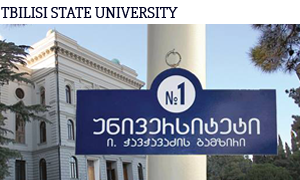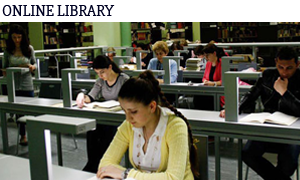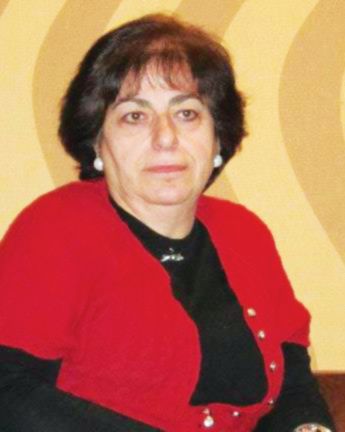
FACULTY OF EXACT AND NATURAL SCIENCES
Cellular Mechanisms of Parenchymal Organ Regeneration
Organ regeneration plays an important role in the main vital processes of living organisms. Scientists explain that usually physiological regeneration is the basis for tissue repair, while in cases of organ damage (traumas, pathologies) or resection (partial removal of an organ or other body structure), reparative regeneration takes place, ensuring partial or complete organ restoration.
The structure of some animal organs consists of the main functional part (tissue), i.e. parenchyma, and its support structure. Parenchymal organs are, for example, the liver, kidney and pancreas. TSU scientists began studying the peculiarities of organ regeneration by looking at the transformations that take place at an initial stage. This research continues at the Laboratory of Developmental Biology and the Department of Cytology, Histology and Developmental Biology of the Faculty of Biology at Tbilisi State University.
Professor Diana Dzidziguri is Project Manager and Director of the Department of Biology at the TSU Faculty of Exact and Natural Sciences and specialist in morphology. She explains that due to its most important functions (detoxification and general metabolic regulation), the liver needs quick and efficient regeneration. Unlike other organs, the liver can repair itself without scar tissue. Despite this, however, in cases of chronic diseases (e.g. chronic viral hepatitis, cirrhosis, etc) its repair capabilities are not always enough for complete regeneration of its functions. This can lead to chronic liver diseases.
Today therapeutic methods to treat liver diseases are imperfect, so it is extremely important to search for methods that will help increase regeneration capabilities. This requires in-depth research on the regeneration mechanisms and factors taking place during this process. Generally processes typical for histogenesis (formation of different tissues from undifferentiated cells) are different according to the organ concerned. Almost all mammal organs have regeneration capabilities, and this means research can be conducted using examples to ascertain general patterns of regeneration processes. Liver regeneration takes place through the coordinated action of humeral factors (related to body fluids) and the autonomic nervous system. The issue plays a decisive role in transplantology because the restoration of innervation (connection of organs and tissues with the central nervous system through nerve cells) is needed to ensure full functioning of a liver transplant. This is why the publications and studies concerning the interconnection between liver diseases and autonomic nervous system has significantly increased over the last 20 years.
The goal of this research was to study the peculiarities of restoration processes after liver denervation (by cutting the vagus nerve) in adult rats. It was ascertained as a result of our research that after cutting the vagus nerve, liver regeneration is hampered. We used a well-known method of resection of an organ, and as a result of multiple experiments carried out on experimental models of regenerated organs, we ascertained that 1. At the initial stage of restorative growth, gene activation is taking place in the cells of several organs and the highest growth is observed during the sixth hour after surgery. These genes are called “early response genes”. 2. Following on the example of a regenerated liver, the highest activity of “early response genes” is found not only in the tissues with different regeneration capabilities, but is found in almost all types of organisms, from mollusks to mammals; 3. A testing system has been developed, enabling the researchers to carry out a comparative study of the functional activity of different cell nuclei. No similar research is known to have been conducted in Georgia.
As a result of observations on experimental models of liver damaged by various pathologies, the TSU researchers clarified a number of previously unknown issues, particularly that of bilateral adrenalectomy (the surgical removal of both of the adrenal glands). This operation triggers destructive changes in liver tissue and the researchers showed for the first time that genome growth takes place in destructive liver cells of the adult body in order to restore its function. Chromosome numbers increase through an endoreduplication mechanism, i.e. without moving to a separation phase (mitosis). Such a phenomenon was previously described only in giant mammal cells at the pro-embryo stage. Experiments conducted on the cholestatic liver (a condition where bile cannot flow from the liver to the duodenum) showed that as a result of a long occlusion (blockage) of the bile duct, chromosomes grow in response, to enhance the functional load of the liver; however, this growth is achieved through incomplete mitosis (indirect separation of cells). An experimental cholestatic liver model was developed with the support of TSU professors Dimitri Kordzaia and Giorgi Megrelishvili, and performed through joint research with them. The research results were published in a form of articles and several conference materials.
Professor Dzidziguri began studying this issue 25 years ago with her teacher, colleague and friend, late Professor Grigol Tumanishvili. TSU Associate Professor Pavle Chelidze was also involved in the research and today several researchers are involved in studying cellular mechanisms of parenchymal organ regeneration: Assistant Professors at TSU Faculty of Exact and Natural Sciences, Doctors of Biology Irina Modebadze and Ekaterine Bakuradze. Third-year BA students, MA students participate, as well as PhD student Salome Kiparoidze. They have presented the results of their research at several conferences and symposia. Results have been published in: Cell Tissue Res; Cel Biol Intern; Georgian Medical News; Annals of Biomedical Research and Education; Cytology; Bulletin of the Georgian Academy of Sciences, and others.




